Copper Ice Cream Scoops
The use of pure copper, a metal with high thermal conductivity, presents a technical improvement to Sherman L. Kelly’s famous aluminium ice cream scoop design dating from 1935. However, due to the difficulty of casting pure copper by the lost-wax method, the scoop comes out of the mould damaged and imperfect. The scoop is restored to functional use with tin and resin. This technique of pre-consumer repair advocates for the greater use of repair as a transformative process in the design, production and consumption of domestic objects. Photography by Dean McCartney
This project developed from a study of the classic Zeroll ice cream scoop designed by Sherman L. Kelly, and the many copies produced by other manufacturers, which are all made from cast aluminium. This material choice is presumably a compromise between various economic and technical concerns, primarily thermoconductivity (aluminium has quite good thermoconductive properties), casting and material properties, but also cost (aluminium casts at quite low temperature with good resolution, is strong and light, not expensive and can be endlessly recycled). But there are other materials which have better thermoconductivity, so aluminium as a compromise choice cannot be said to technically optimal for the function purpose of scooping ice cream, in which heat from the hand is conducted to the scoop blade via a heat transfer fluid (water and propylene glycol, a food safe antifreeze) contained in the handle. There was a technical imperative to swapping out the commonly used metal for some other material. Other than pure silver, pure copper is the most thermoconductive metal, and while much cheaper than silver, it is also much more expensive than aluminium. Changing an expected material for something unexpected while leaving all other properties unchanged is a long-standing creative technique for drawing or re-drawing attention to an object. The technique was perhaps first exploited fully by the Surrealist movement, but more recently by Italian Radicals and many Dutch conceptual designers. From my experience on other projects, such as my silver toilet brush and gold and rhodium cocktail straws, I found that such a change is often also accompanied by interesting and unexpected contingencies. For this project, I was initially keen to test an ancient philosophical argument. Telos was the word the ancient greek philosopher Aristotle used to describe the purpose of an object. A shoe is to be worn, a vase holds water, and the telos of an ice-cream scoop is to scoop ice-cream as efficiently as possible. He objected to the use of money in the exchange of goods, because, unlike barter, money placed a secondary function on the purpose of an object: to make profit. Since that time, we see the effects of this secondary function on every marketable product. As cost seems so obviously a factor for the choice of aluminium for Kelly’s design, it could be argued that the design is a construct of secondary concerns and not a product of pure telos. However, the light weight of aluminium is certainly a utilitarian feature for a hand held device. In any case, changing the material to pure copper was a method to test these positions and hopefully provoke the unexpected to stir from the design. Contacting manufacturers to assist me with production soon made me realise that this was not going to be simple as perhaps imagined. In fact, I began to realise I was experiencing a productive inflection point (after Deleuze & Guattari, and Bernard Cache) – the trajectory of my project was changing. Mainly this concerned the difficulty of casting pure copper – no manufacturer had experience nor wanted to do it. Alloys of bronze (copper and tin) or brass (copper and zinc) would be fine and are commonly cast, but the addition of these extra metals changes the thermoconductivity dramatically for the worse. Machining the copper was an obvious solution – suitable and more cost efficient at the volumes I typically produce. Incidentally, copper is a wonderful metal to machine, soft and yielding to the tool, yet strong and structurally sound – when drilled or milled its swarf flows out in long lustrous whorls. Yet, my intent was to change the most minimum production criteria. Aluminium ice cream scoops are cast, so should this copper scoop. And by this point I was recognising the inflection point; the more manufacturers said they wouldn’t do it, the more a conceptual reason existed for me to make it happen. With persistence I found an casting engineer pleasantly willing to try, with no promise of success. It should be self-evident from the image of the scoops as they was returned to me why pure copper is not cast. Pure molten copper is unstable and unpredictable. It flows thick, oxidises and off gases at temperature and must be melted under a layer of flux. As a result in this case, the metal does not flow freely into the mould and the cast comes out collapsed and imperfect. Yet perfect as a starting point for my repair practise and as a methodological critique of industrial models of production and consumption, as explained in the introductory paragraph above. For me, the point is that the process necessitates repair, and so produces a beautiful object with interesting and contradictory aesthetics. In terms of function, the scoops work very well. Note: I subsequently wrote about this work in my paper Capturing the Middle: experimental product design and the expression of socio-environmental relations in material, in which I also discuss the work Botanica by Formafantasma.
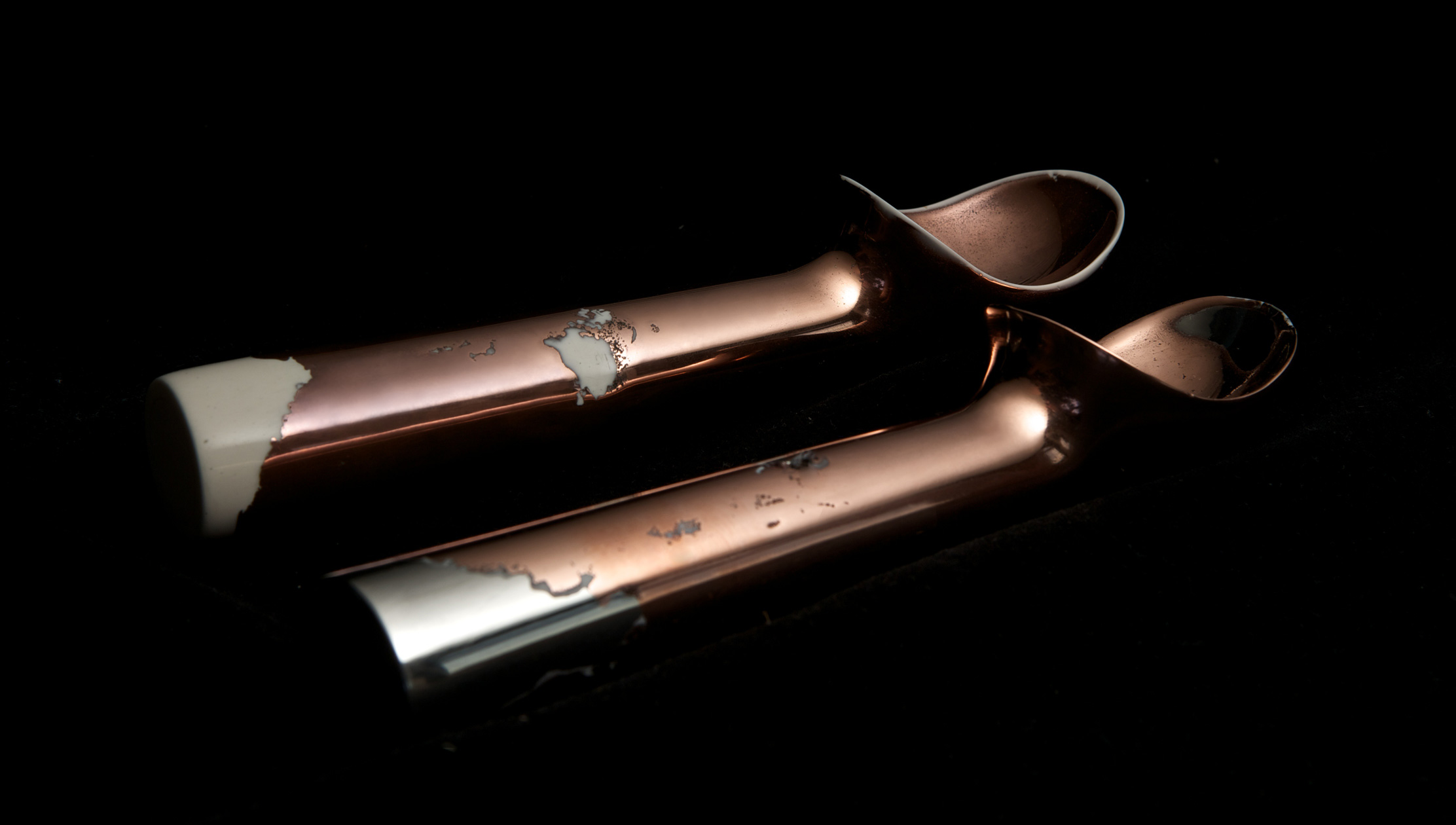
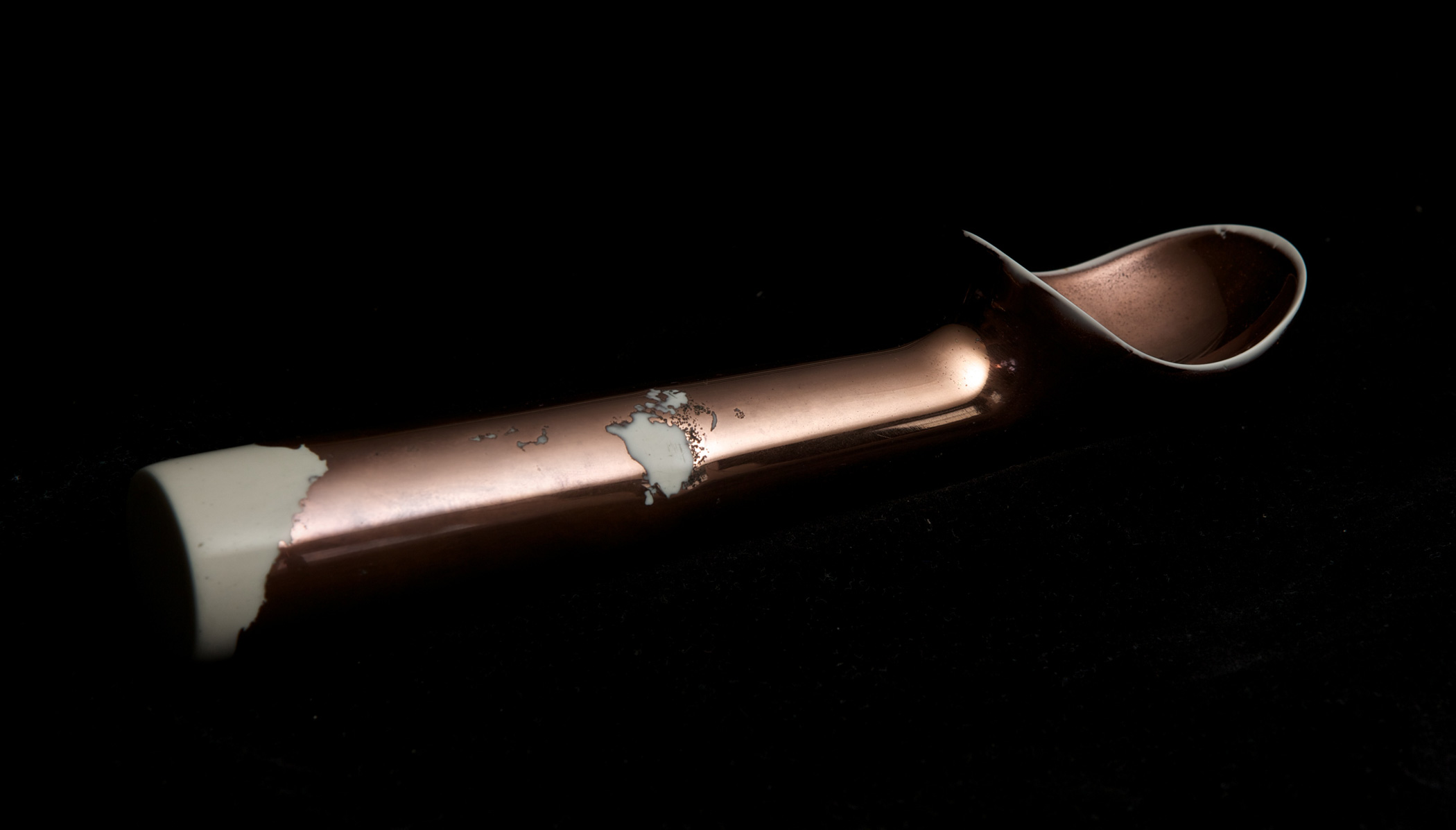
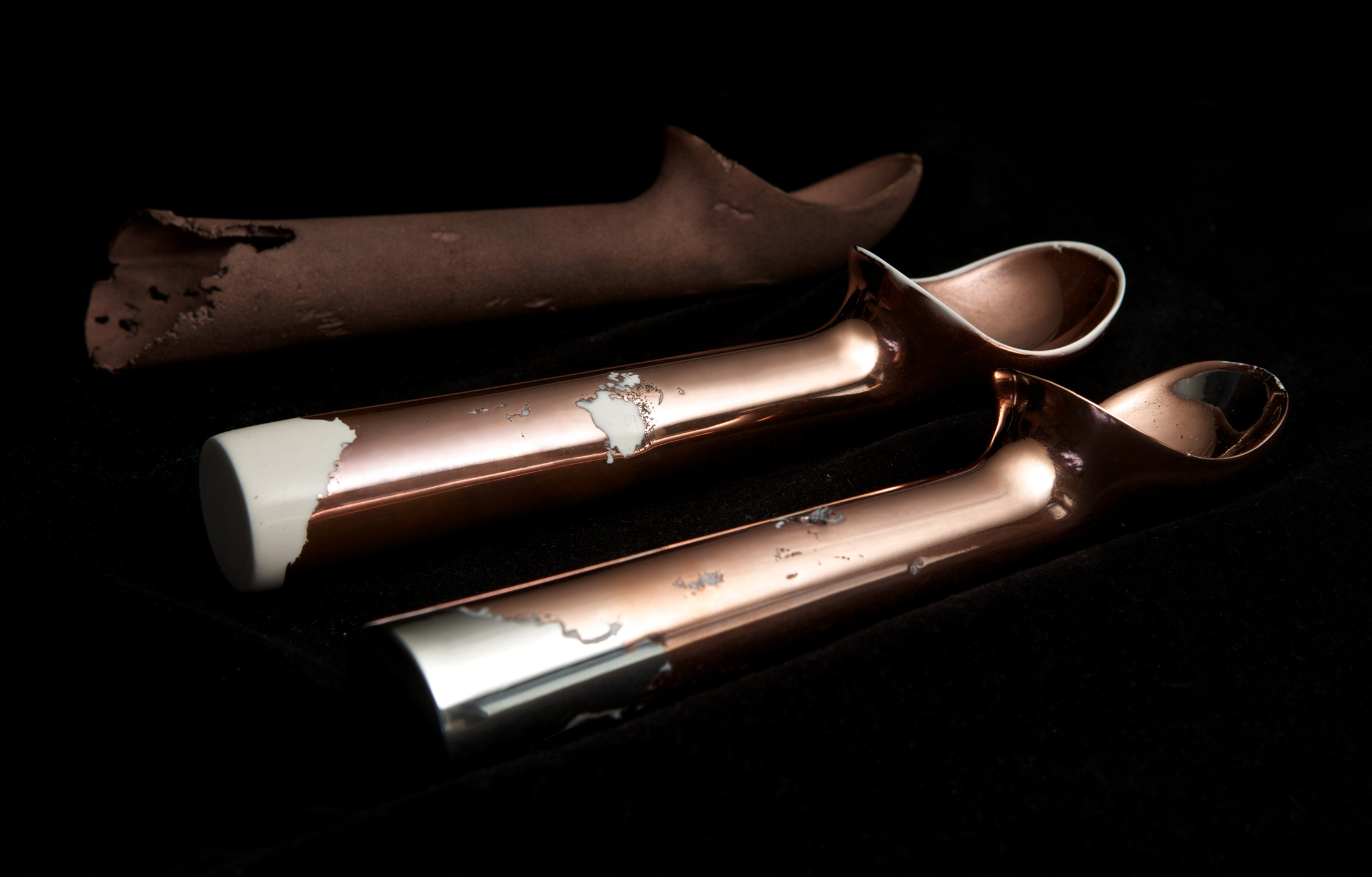
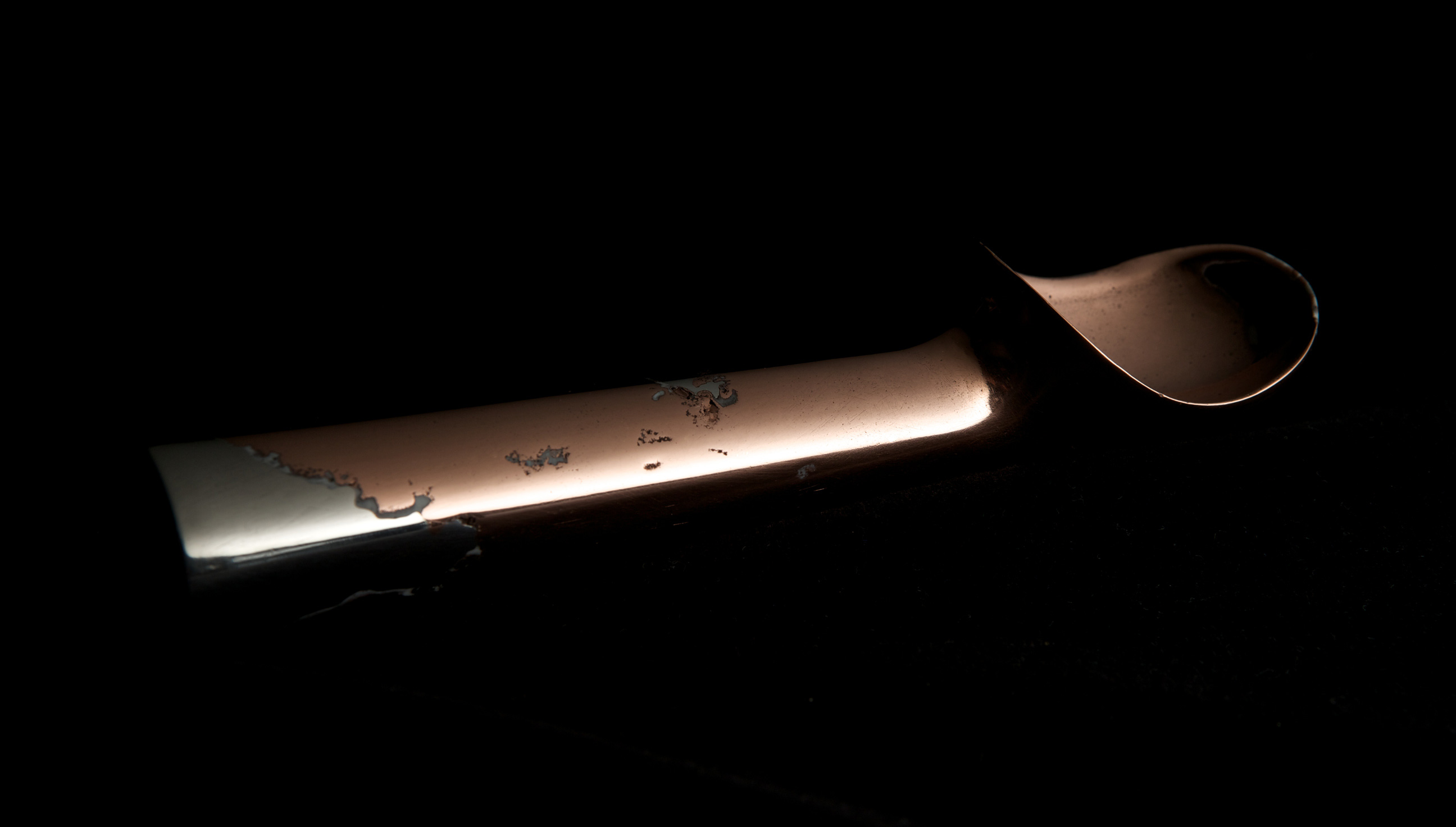
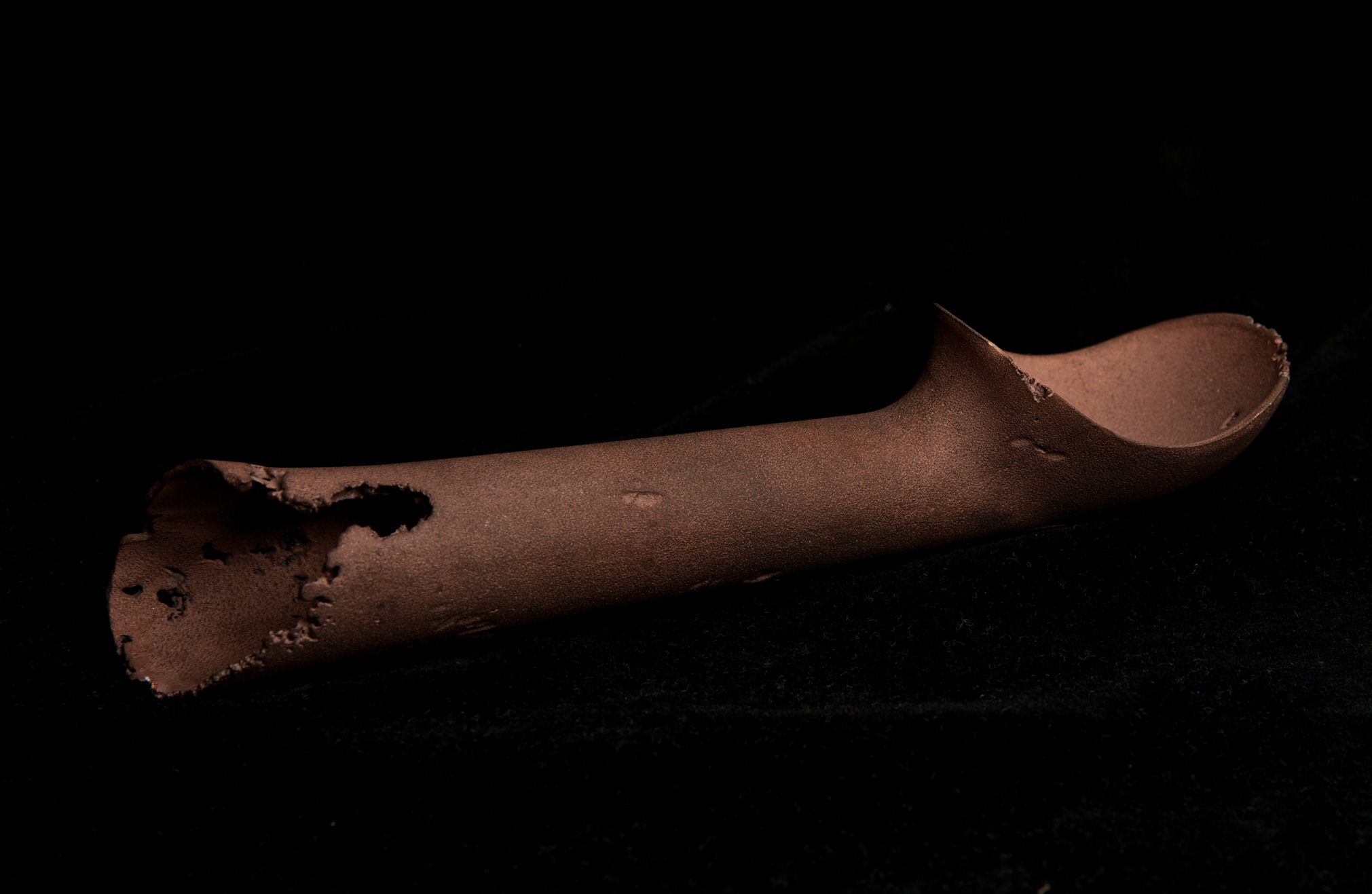
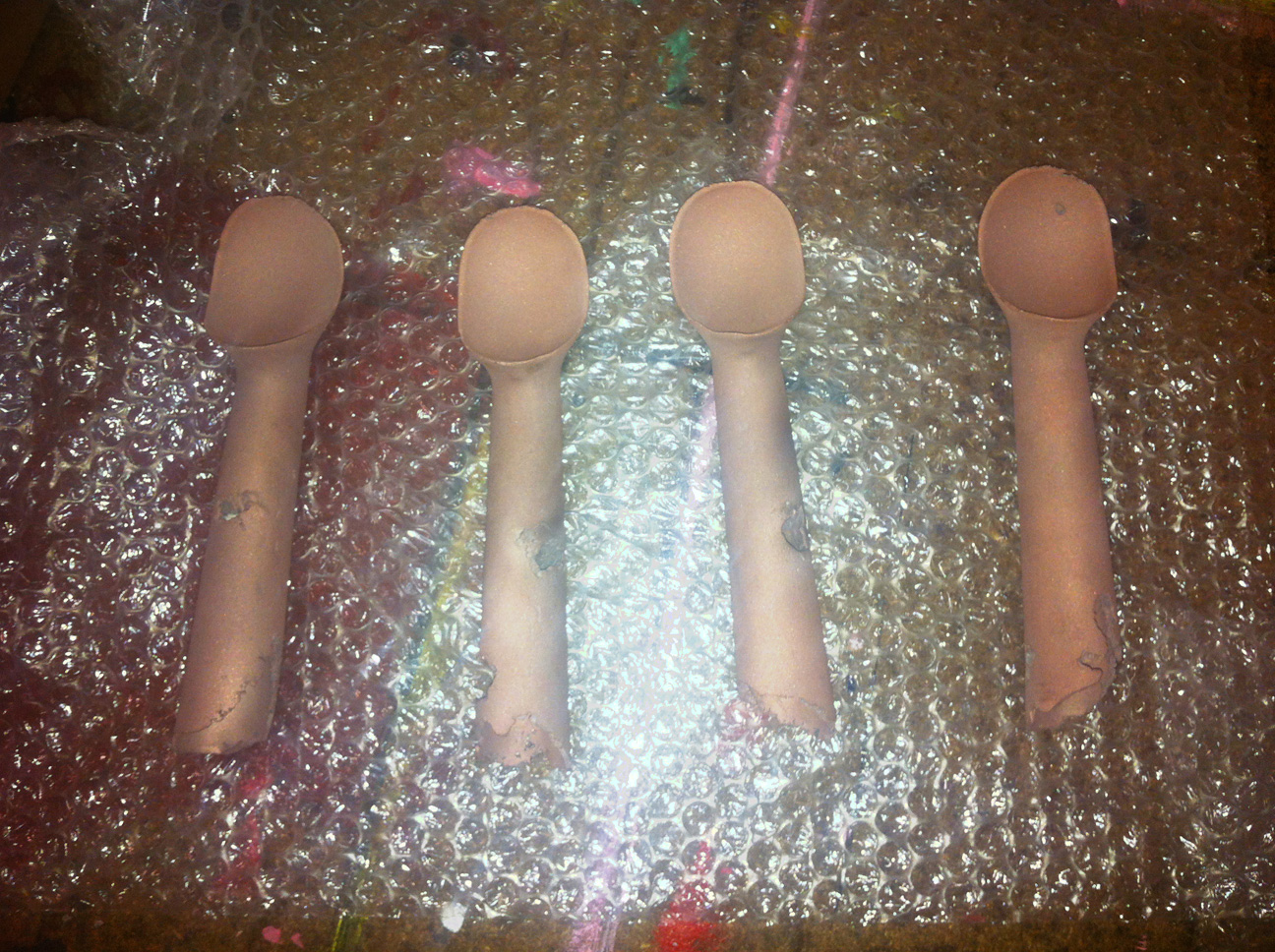
Lisa-Jane says:
Jan 9 at 01:16Hi Guy,
Can you purchase the copper ice cream scoop?
How and what is the price?
Love to buy one for my partner.
We have copper gardening tools, spade and trowels and love not just the old worlde aesthetic but the bug repellent attributes of copper garden tools.
Thanks.
guy keulemans says:
Jan 13 at 02:31Hi Lisa-Jane, I’ll send you an email about that.
Jean Boardman says:
Jan 29 at 06:48I am a cook, not a scientist or a physician, but have always been warned not to use copper in direct contact with food — does your research indicate that warning only applies to hot and acidic foods? And what about holding the scoop in one’s hand for several hours as an ice cream server must do, would body heat cause absorption of copper leading to toxicity? I am attracted to the look of the scoop, but would hesitate to use it regularly.
I enjoyed your article on the history of the Zeroll scoop.
Thnaks, Jean
guy keulemans says:
Jan 30 at 07:52Hi Jean
Thanks for your comment. Regarding copper toxicity, I researched this issue thoroughly, because like you I had heard copper can leech into food. However, as you have indicated, this is only an issue when acidic food is cooked at temperature, combined. This is why copper saucepans are tinned, for example, because cooking something acidic like a tomato sauce could potentially be toxic. I had assumed that I would also been tinning my ice cream scoops, but then my research on the conditions for toxicity showed it would not be necessary. Ice cream is always cold, so even an acidic lemon sorbet creates no risk. Note that classic French copper bowls for omelette preparation are unlined, and so are copper water pipes (which also carry hot water, but presumably not hot, acidic water), so its important to understand that while copper can be toxic given the wrong conditions, it also has a long history of safe human use.
But regarding your second comment: the scoop is indeed much heavier than the aluminium versions and for this reason not suitable ergonomically for commercial use. This isn’t of much concern because the price it costs to manufacture these scoops puts it beyond commercial interest. They’re really only for a niche domestic market.
Thanks again for your comment, its always interesting to discuss such things.
Jean Boardman says:
Feb 1 at 10:42Thanks for responding to my query, I forgot about my copper bowls for beating egg whites for souffles!
Re water pipes –what about acid rain? If it is killing trees on top of our Vermont mountains, how much of the acid is drained out of our ground water? just curious, you needn’t respont to that.
jean
Pingback: Guy Keulemans – Emerging Designer Award 2014 — Temple & Webster Blog
Katherine says:
Mar 10 at 07:41Hi Guy,
I found a Kelly Sherman no weight in handle labeled Roldip. made in Maumee OH. I did research a bit to find out that his son Moved the Co. there three years after Kelly’s death (his father K. Sherman). I have never seen one like this before and thought you might like to see the photos of this. My only reasoning for the way this was made was that there was still some kind of shortage of aluminum or that his son was having such a heard time with making the biz. prosperous like before the war. Love to hear about your thoughts on this scoop that is un tractable. thank you for reading.
Katherine.
P.S. love your work! take care.
guy keulemans says:
Mar 25 at 01:32Hi Katherine, thanks for your comment. Yes I would like to see a picture of that! I’ll email you.
Edwin Lim says:
Jul 28 at 03:05Hi Guy,
I enjoyed reading your article, especially your thought process through the product research and design. Thank you for sharing. Your study revealed some shortcomings of cast copper and the subsequent repair; did you also try machining the scoop to see how it turns out?
May I enquire as to the price of a copper scoop? I am interested in them both for its functional use as an ice cream scoop, and also for its beauty.
Comments are closed.